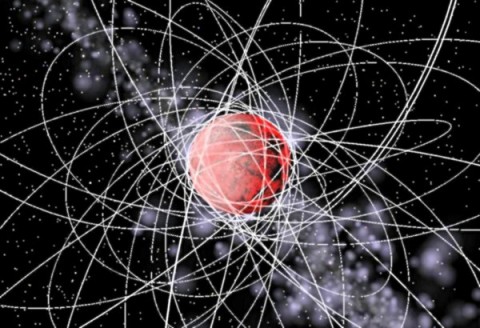I Have Seen the Future and It is Shared.

Does science fiction have a future? It’s past as a genre of pulp fiction that came up with the twentieth century leaves it in a precarious position at the beginning of the twenty-first. Once, like the buffalo, it roamed across the wide open spaces of the news stands and now only a handful of those magazines still exist and it’s been a long time since the days when a single short story sale could secure two month’s rent in Greenwich Village. There are novels, truck loads of novels as the publishing industry performs a final Ghost Dance. Science fiction has an odd relation to the novel. It thrives on ideas, the quick and the glib are it’s true masters. The novel can be a ponderous tool in a genre that thrives on genuine novelty. A spectre is haunting science fiction; the spectre of it’s popular success. Can science fiction get it’s groove back?
Well, there’s the Internet and there’s role-playing. When pressed to come up with a twenty-first century version of pulp fiction I look to the paper and pencil school of role playing games for it’s nearest equivalent. Television series aim far too low to qualify and the graphic novel seems too stuck on the images to engage the ideas. In role-playing the need for settings and situations that appeal to science fiction fans is fast and furious. Combine the social cohesion of the Net with the world building skills that the D.I.Y. school of role playing teaches and an interesting hybrid could emerge. Let’s consider the case of the Orion’s Arm project (www.orionsarm.com). Originally started by a group of science fiction fans and transhumanist thinkers, including M. Alan Kazlev, Donna Malcolm Hirsekorn, Bernd Helfert and Anders Sandberg, Orion’s Arm is a Creative Commons licensed, shared world/timeline that runs approximately 10,000 years into the future.
In depth and complexity the future imagined by the Orion’s Arm collaborators rivals any of the big franchises (Star Trek, Star Wars, Stargate, et al.) and unlike them, steadfastly operates under the assumptions of present day ” hard science”. No time travel, no faster-than-light starships (allowances are made for wormholes), no aliens that look like people with bumpy heads (sorry, no green skinned alien princesses) and a big no to everything that has made commercial science fiction as misinformed and unimaginative as it has become.
Orion’s Arm takes place millennia after the Singularity (the point at which computers surpass human intelligence and start to work on surpassing themselves), the A.I.’s (or Archailects) are the top of the food chain with humans of various types from “baselines” (that’s us) to wildly augmented and more numerous “posthumans” expanding out into space at just a notch under the speed of light. Under the guidance of the Archailects stellar empires and commonwealths build solar system spanning engineering projects and compete on a colossal scale.
The current work/discussion groups are:
Worldbuilding which creates the canon items of history, technology and science that is at the heart of the project.
Nexus, the meeting place for content creators, writers and artists that use the Orion’s Arm project as a setting for stories, artwork and animation.
OA Celestia, which creates extensions for the Celestia application which allows Orion’s Arm users to model the planets and space habitats in a 3D atlas of the Milky Way galaxy.
Membership is open to anyone or thing that can pass a Turing Test. Even if you are not artistically inclined or a science/tech boffin the discussion groups alone make for a Grade A lurking experience with debates on exotic propulsion systems, exobiology, transhumanist philosophy, terraforming schemes and directed evolution filling the forums on a daily basis. The future is shared and you can get a galactic scale splice of it in the Orion’s Arm.




